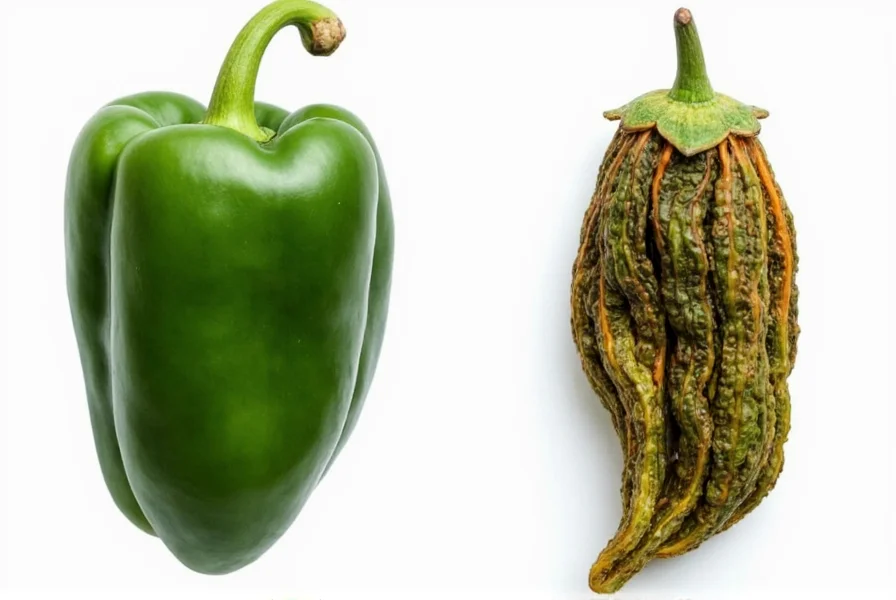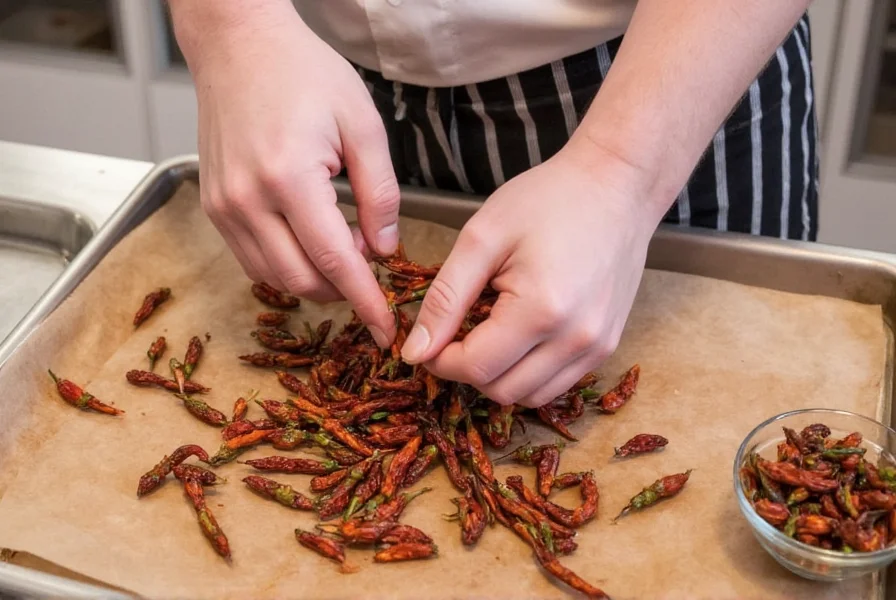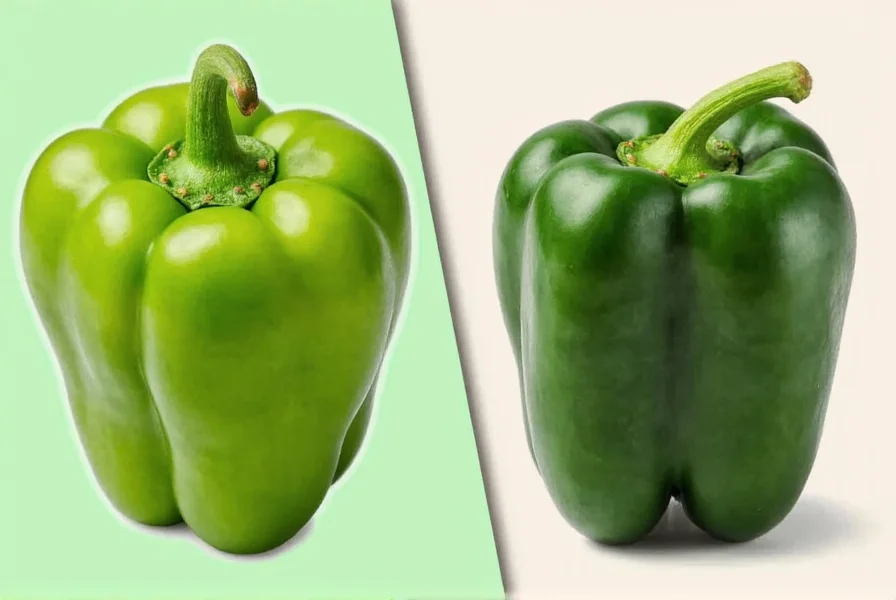Many home cooks and even experienced chefs confuse pasilla peppers with poblanos, but understanding the differences between these two Mexican chilies is essential for authentic cooking. Despite their similar names and regional origins, these peppers serve distinct culinary purposes and cannot be used interchangeably without affecting your dish's flavor profile.
Physical Characteristics: Appearance and Form
The most immediate difference between pasilla and poblano peppers lies in their physical form. Poblano peppers are large, heart-shaped fresh peppers that measure 4-6 inches long with thick walls. When immature, they're dark green, turning to deep red as they mature. In contrast, pasilla peppers are actually dried chilaca peppers—the fresh form of pasilla—which are long, thin, and dark green when fresh. Once dried, pasilla peppers become wrinkled, narrow, and dark brown to black in color.
| Characteristic | Poblano Pepper | Pasilla Pepper |
|---|---|---|
| Form | Fresh | Dried (from chilaca) |
| Shape | Heart-shaped, wide | Long, narrow, wrinkled |
| Color | Dark green (fresh), red (mature) | Dark brown to black (dried) |
| Size | 4-6 inches long | 6-8 inches long |
Flavor Profiles and Heat Levels
When comparing pasilla pepper vs poblano heat levels, both fall in the mild to moderate range on the Scoville scale, but with notable differences in flavor complexity. Poblano peppers offer a mild, earthy flavor with subtle grassy notes and a heat range of 1,000-2,000 Scoville Heat Units (SHU). They're commonly stuffed (as in chiles rellenos) or roasted for sauces.
Pasilla peppers, being dried, develop a more complex flavor profile with notes of dried fruit, tobacco, and coffee, registering between 1,000-2,500 SHU. Their heat tends to be more pronounced than fresh poblanos due to the concentration that occurs during drying. The drying process transforms the chilaca's flavor from mildly grassy to deeply smoky and rich.

Culinary Applications and Substitutions
Understanding when to use pasilla versus poblano is crucial for authentic Mexican cuisine. Poblano peppers shine in dishes where their thick walls and mild flavor can be showcased—stuffed as chiles rellenos, roasted for chiles en nogada, or blended into green sauces. Their fresh form makes them ideal for recipes requiring substantial pepper pieces.
Pasilla peppers, as dried chilies, are primarily used in mole sauces, adobo pastes, and other complex sauces where their deep, smoky flavor can infuse the entire dish. They're typically rehydrated and blended rather than used whole. When following traditional recipes, substituting one for the other will significantly alter the intended flavor profile.
For those wondering can I substitute pasilla for poblano, the answer depends on the recipe. In sauces where the pepper is blended, you might substitute dried ancho (which is actually dried poblano) for pasilla, but never use fresh poblano where dried pasilla is called for. The moisture content and flavor profiles differ too significantly.
Common Misconceptions Clarified
One widespread confusion in the pasilla pepper vs poblano debate stems from regional naming differences. In Mexico, the fresh form of pasilla is called chilaca, but in the United States, grocery stores sometimes mislabel dried poblanos (which are properly called ancho peppers) as pasillas. This mislabeling has created significant confusion among home cooks.
True pasilla peppers come from dried chilaca peppers, not poblanos. Ancho peppers are dried poblanos. This distinction matters because chilaca and poblano peppers are different varieties with distinct flavor profiles. When shopping for authentic ingredients, look for "chilaca seco" for true pasilla or "ancho" for dried poblano to avoid recipe failures.
Storage and Preparation Tips
Fresh poblano peppers can be stored in the refrigerator for 1-2 weeks in a plastic bag. For longer storage, roast and freeze them. Dried pasilla peppers should be kept in an airtight container in a cool, dark place where they'll maintain quality for 6-12 months.
When preparing pasilla peppers, remove stems and seeds before rehydrating in hot water for 15-20 minutes until pliable. Poblano peppers often require roasting to loosen their skins before use in most traditional applications. Never use dried pasilla peppers without rehydrating first, as they'll be too tough to incorporate properly into dishes.

Regional Availability and Purchasing Guide
Fresh poblano peppers are widely available in most grocery stores across North America, typically labeled as "poblano" or sometimes "pasilla" (incorrectly). True pasilla peppers (dried chilaca) are more commonly found in Latin American markets or specialty spice stores. When purchasing, look for plump, firm poblanos without wrinkles or soft spots, and for pasillas, seek out deeply wrinkled, dark brown peppers with a rich aroma.
For those exploring pasilla pepper vs dried poblano options, remember that dried poblano is properly called ancho pepper. This distinction is critical when following authentic Mexican recipes that specify particular dried chilies for their unique flavor contributions to complex sauces like mole negro or adobo.
Conclusion: Making the Right Choice for Your Recipe
While both peppers originate from Mexico and share mild heat characteristics, the fundamental difference between pasilla and poblano peppers lies in their form and resulting flavor profiles. Poblano is a fresh pepper used in its green state, while pasilla is a dried pepper with concentrated, complex flavors. Understanding these differences ensures your Mexican dishes achieve their intended flavor balance. When in doubt, consult authentic regional recipes that specify exactly which pepper variety works best for each culinary application.
Frequently Asked Questions
Can I substitute poblano for pasilla in recipes?
No, fresh poblano cannot substitute for dried pasilla as they have different flavor profiles and moisture content. If you need a pasilla substitute, use mulato or ancho peppers (which are dried poblanos), but never use fresh poblano where dried pasilla is called for in authentic recipes.
Is a pasilla pepper just a dried poblano?
No, this is a common misconception. Pasilla peppers are dried chilaca peppers, not dried poblanos. Dried poblanos are called ancho peppers. The confusion stems from mislabeling in some grocery stores, but they are distinct pepper varieties with different flavor profiles.
Which pepper is hotter, pasilla or poblano?
Pasilla peppers are slightly hotter than poblanos. Poblanos range from 1,000-2,000 Scoville Heat Units (SHU) while pasillas range from 1,000-2,500 SHU. However, since pasillas are dried, their heat is more concentrated, making them taste noticeably hotter in recipes despite the similar numerical range.
What's the best way to use fresh poblano peppers?
Fresh poblanos excel when roasted and stuffed (chiles rellenos), blended into green sauces, or diced for salsas and casseroles. Their thick walls make them ideal for holding fillings, and roasting enhances their natural sweetness while making the skin easy to remove.
How do I properly rehydrate pasilla peppers?
To rehydrate pasilla peppers, remove stems and seeds, then soak in hot water for 15-20 minutes until pliable. For enhanced flavor, toast them lightly in a dry skillet first, then soak in hot broth or water with a touch of vinegar. Proper rehydration ensures they blend smoothly into sauces without tough bits.











 浙公网安备
33010002000092号
浙公网安备
33010002000092号 浙B2-20120091-4
浙B2-20120091-4